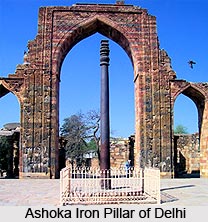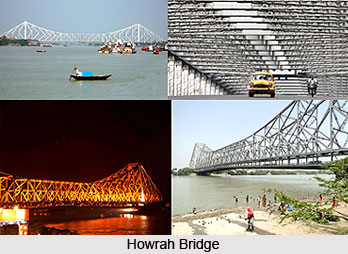 Developments in Metallurgy formed a major part of early royal inspection of India`s `arts`. Delhi`s Iron Pillar was the only testimony to great achievements of prehistoric ironsmiths. Wootz steel that was produced was used in swords and other weapons. It was renowned in the East for centuries and admired in Europe till the nineteenth century. Later on the Indian techniques were disregarded. According to geologist Valentine Ball Indian ironworkers had been criticized as it was believed that `though they possess the art, they know nothing of the science`.
Developments in Metallurgy formed a major part of early royal inspection of India`s `arts`. Delhi`s Iron Pillar was the only testimony to great achievements of prehistoric ironsmiths. Wootz steel that was produced was used in swords and other weapons. It was renowned in the East for centuries and admired in Europe till the nineteenth century. Later on the Indian techniques were disregarded. According to geologist Valentine Ball Indian ironworkers had been criticized as it was believed that `though they possess the art, they know nothing of the science`.
Inefficiency and uneconomical production lead to a decline in mining and metallurgy. It had to wait several decades longer in order to experience the reviving effects of modern technology. Though Indians had mined iron, copper, gold, lead and other metals long before, they were deemed as waste by contemporary Europeans. Copper mines in the Himalayan foothills included better tools and the use of timber props and steam-driven pumps stopped. However some changes were introduced and the mines were abandoned in 1841.
The British rediscovered the very old Kolar gold mines in Mysore in 1802. Post 1871 new mining syndicates began to amend the old shafts till the introduction of electric power in 1900. This led to mining operations being carried to new heights. In Rajasthan lead mining had been highly productive. It relied on old and labour-intensive techniques. However the output was purer than that available in Britain. It could not compete with the imported product of Agra. During the 1812 famine zinc mines in Rajasthan were closed due to labour shortage. They never reopened.
Diamond mining established Indian wealth among the Westerners. In the nineteenth century diamond mining was carried out on an inefficient and unprofitable basis, without survey benefits and with the basic mining technology. Dry-season diamond workings in Bundelkhand were merely pits. They were not unearthed to a depth of more than 50 feet before the water-level rising high. Persian wheels were used in order to extract water from the diggings. Stones were found and the profits were small in order to attract European investment as innovation in technology.
Iron manufacture was so much prevalent that there were 10,000 iron and steel furnaces that were operating in eighteenth-century in India. It produced 20 tons of iron a year. Thereafter India became one of the major markets for Britain`s iron. There were attempts to exploit Indian resources. For instance in south India the Iron and Chrome Company was established at Porto Novo on the Coromandel Coast. It produced high-quality steel and sold well in Britain. However the output suffered due to charcoal shortage. Thereafter the company switched to production of pig iron as it required less fuel. However by the 1860s the company collapsed due to the constant shortages and high transport costs.
Coal mining was another luring business. The Raniganj field was discovered in1774. Later In 1836 the coalfield was purchased by Dwarkanath Tagore. As there was a good scope in railways production doubled. By 1880s there were more than 7 mines that was scattered over an area of 500 square miles. Two-thirds of the coal was consumed in India and only a third was imported. The technology however remained basic. Coal extraction was highly labour-intensive. Introduction of electricity in early twentieth century made the mines efficient thereby allowing coal to be mined at deeper depths.
Certain factors held back the development of mining industry. These include foreign competition that was aided by absence of tariff barriers and lack of technological innovation. Mining and metallurgy was affected by political and economic and technological concerns. By the early nineteenth century most of the mines in Rajasthan were abandoned. The mining of lead for ammunition at Ajmer was considered as a threat by the Britishers.



















